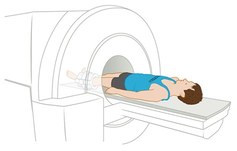Research Projects
Research group Derave - Lievens
1. Metabolism of carnosine and related compounds
We explore the physiological regulation and the role of carnosine (a dipeptide composed of beta-alanine and histidine) with a characteristically high concentration in skeletal muscle.
Representative publication:
- Boldyrev A., Aldini G, Derave W (2013). Physiology and pathophysiology of carnosine. Physiol Rev 93(4): 1803-1845.
2. Effect of nutrition and dietary supplements/medication on performance and health
This research line focuses on the effect of dietary supplements (beta-alanine) and medication (anti-histamines) on exercise performance during different types of exercise as well as in relation to health and diseases. Towards exercise, Team Derave has a specifically strong research expertise in the field of beta-alanine and bioactive compounds in fish and meat. Towards health, the research group focuses on dietary supplements in relation to the development of diabetes, diabetic complications and other metabolic disorders.
Representative publications:
- Blancquaert L., Everaert I., Baguet A., Bex T., Barbaresi S., de Jager S., Lievens E., Stautemas J., De Smet S., Baron G., et al. (2021) Acute preexercise supplementation of combined carnosine and anserine enhances initial maximal power of Wingate tests in humans. JOURNAL OF APPLIED PHYSIOLOGY. 130(6). p.1868-1878.
- Everaert I., Van der Stede T., Stautemas J., Hanssens M., van Aanhold C., Baelde H., Vanhaecke L. and Derave W. (2021) Oral anserine supplementation does not attenuate type-2 diabetes or diabetic nephropathy in BTBR ob/ob mice. AMINO ACIDS. 53(8). p.1269-1277.
- Van der Stede T., Blancquaert L., Stassen F., Van Thienen R., Everaert I., Vervaet C., Gliemann L., Hellsten Y. and Derave W. (2021) Histamine H1 and H2 receptors are essential transducers of the integrative exercise training response in humans. SCIENCE ADVANCES. 7(16)
Download our free Infographic on ‘How to use beta-alanine’.
3. The Muscle Talent scan


All information on this project can be found on the next website: http://www.muscletalentscan.com and http://www.victoris.ugent.be
Do you want more information on the relevance of the muscle fiber typology in sports ? Have a look at our new illustrated guide: Myotypes - the relevance of muscle fiber typology in sports (2021)(Lievens E., Stassen F., Derave W.)
Representative publications:
- Lievens E., Van Vossel K., Van de Casteele F., Wezenbeek E., Deprez D., Matthys S., De Winne B., McNally S., De Graaf W., Burdoch J., et al.(2021)
Muscle fibre typology as a novel risk factor for hamstring strain injuries in professional football (soccer) : a prospective cohort study
SPORTS MEDICINE. 52(1): p177-185. - Lievens E., Klass M., Bex T. and Derave W. (2020) Muscle fiber typology substantially influences time to recover from high-intensity exercise
JOURNAL OF APPLIED PHYSIOLOGY. 128(3). p.648-659. - Baguet A, Everaert I, Hespel P, Petrovic M, Achten E, Derave W (2011). A new method for non-invasive estimation of human muscle fiber type composition. Plos One 6(7): e21956.
Follow our research progress via:
- X/Twitter
- Muscle Apps; a webpage that clusters all our created Shiny Apps related to muscle research in a simple and interactive way
Research group Boone - Bourgois
1. The Critical Power Concept
The Critical Power Concept quantifies the hyperbolic relationship between power and duration (time to exhaustion). The Critical Power represents the asymptote of this hyperbolic relationship which corresponds to the maximal lactate steady state and represent a critical intensity while performing exercise. The second parameter within this model is W’, representing an anaerobic energy reserve, that can be used by the athlete while performing above the Critical Power.
Representative publication:
- Caen K., Bourgois J., Bourgois G., Van Der Stede T., Vermeire K., Boone J. The reconstitution of W’ depends on both work and recovery characteristics. Medicine and Science in Sports and Exercise, 51: 1745-1751, 2019.
2. Training load monitoring/quantification and Performance prediction
The accurate quantification of training load is an essential part of the training process, especially since an optimal training effect requires a well-balanced alternation between training and recovery. Identifying the relationship between training (load) and change in performance is considered as the holy grail within the research domain of physical conditioning. The research within this project tries to monitor and predict performance based on the content and the load of training.
Representative publication:
- Vermeire K., Vandewiele G., Caen K., Lievens M., Bourgois J., Boone J. Training progression in recreational cyclists: no linear dose-response relationship with training load. Journal of Strength and Conditioning Research, 2019.(published ahead of print)
3. The effects of apnea (training) on health and performance
Holding the breath (i.e., apnea) poses a critical challenge to the human body as the oxygen supply to the body is restricted. In the body the ‘diving response’ will induce an oxygen conserving effect and will ensure that the oxygen supply to the brain can be maintained. The physiological responses during apnea could have an acute effect on the subsequent performance and also the use of apnea training has shown potential positive effects on performance since it has shown to increase hemoglobin in the blood.
Representative publication:
- Bouten J., Colosio A., Bourgois G., Lootens L., Van Eenoo P., Bourgois J., Boone J. Acute apnea does not improve 3 km time trial performance. Medicine and Science in Sports and Exercise, 2019 (published ahead of print)